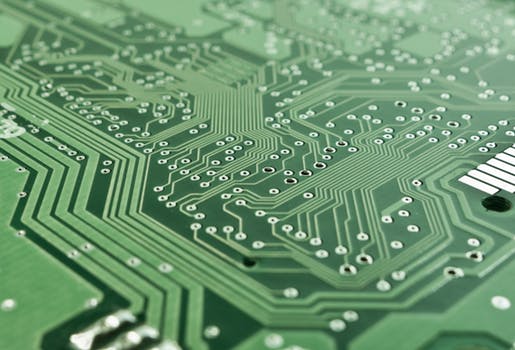TheDeveloperBlog.com
C-Sharp | Java | Python | Swift | GO | WPF | Ruby | Scala | F# | JavaScript | SQL | PHP | Angular | HTML
Learn Operating System (OS) Tutorial
Learn Operating System Tutorial with Definition and functions, OS Tutorial, Types of OS, Process Management Introduction, Attributes of a Process, Process Schedulers, CPU Scheduling, SJF Scheduling, FCFS with overhead, FCFS Scheduling etc.
Operating System Tutorial
Operating System Tutorial provides the basic and advanced concepts of operating system . Our Operating system tutorial is designed for beginners, professionals and GATE aspirants. We have designed this tutorial after the completion of a deep research about every concept. The content is described in detailed manner and has the ability to answer most of your queries. The tutorial also contains the numerical examples based on previous year GATE questions which will help you to address the problems in a practical manner. Operating System can be defined as an interface between user and the hardware. It provides an environment to the user so that, the user can perform its task in convenient and efficient way. The Operating System Tutorial is divided into various parts based on its functions such as Process Management, Process Synchronization, Deadlocks and File Management. Operating System Definition and Function
In the Computer System (comprises of Hardware and software), Hardware can only understand machine code (in the form of 0 and 1) which doesn't make any sense to a naive user. We need a system which can act as an intermediary and manage all the processes and resources present in the system. 
An Operating System can be defined as an interface between user and hardware. It is responsible for the execution of all the processes, Resource Allocation, CPU management, File Management and many other tasks. The purpose of an operating system is to provide an environment in which a user can execute programs in convenient and efficient manner. Structure of a Computer System
A Computer System consists of:

What does an Operating system do?
Operating System IndexOperating System Tutorial Process Management
Synchronization
Deadlocks
Memory Management
File Management
PrerequisitesBefore learning the operating system tutorial, you must have the basic knowledge about the way in which a computer system operates. AudienceOur operating system tutorial is designed to help beginners, professionals and GATE aspirants. ProblemWe can assure you that you will not find any problem in this operating system tutorial. However, if you find any, you can post the problem in the contact form.
Next TopicHistory Of Operating Systems
|
Related Links:
- Learn Operating System (OS) Tutorial
- OS Process Management Introduction
- OS Convoy Effect in FCFS
- OS Attributes of a Process
- OS Process States
- OS Process Schedulers
- OS Burst Time Prediction
- OS SRTF scheduling Algorithm
- OS Process Queues
- OS Various Times Related to Process
- OS CPU Scheduling
- OS Scheduling Algorithms
- OS FCFS Scheduling
- OS FCFS with overhead
- OS SJF Scheduling
- OS SRTF GATE 2011 Example
- OS Round Robin Scheduling Algorithm
- OS RR scheduling Example
- OS HRRN Scheduling
- OS HRNN Example
- OS Priority Scheduling
- OS Non Preemptive Priority Scheduling
- OS Preemptive Priority Scheduling
- OS SRTF:IO bound processes
- OS Process Synchronization Introduction
- OS TSL Mechanism
- OS Memory Management Introduction
- OS Critical Section Problem
- OS Lock Variable Mechanism
- OS Priority Inversion in TSL
- OS Turn Variable or Strict Alternation
- OS Interested Variable Mechanism
- OS Paterson Solution
- OS Virtualization
- OS Synchronization Mechanism Without Busy Waiting
- OS Sleep and Wake
- OS Semaphore Introduction
- OS Counting Semaphore
- OS Problem on counting semaphore
- OS GATE 2014 question on TLB
- OS Binary Semaphore or Mutex
- OS Deadlocks Introduction
- OS Strategies Handling Deadlocks
- OS Deadlock Prevention
- OS Deadlock Avoidance
- OS Resource Allocation Graph
- OS Deadlock Detection using RAG
- OS Deadlock Detection and Recovery
- OS Fixed Partitioning
- OS Dynamic Partitioning
- OS Compaction
- OS Bit Map for Dynamic Partitioning
- OS Linked List for Dynamic Partitioning
- OS Partitioning Algorithms
- OS GATE Question on Best Fit and First Fit
- OS Need for Paging
- OS Paging with Example
- OS Basics of Binary Addresses
- OS Physical and Logical Address Space
- OS Page Table
- OS Translation Look aside Buffer
- OS Mapping from page table to main memory
- OS Page Table Entry
- OS Page Table Size
- OS Finding Optimal Page Size
- Virtual Memory
- OS Demand Paging
- OS Inverted Page Table
- OS Segmentation
- OS Page Replacement Algorithms
- OS Gate 2015 question on LRU and FIFO
- OS Numerical on LRU, FIFO and Optimal
- OS Beladys Anamoly
- OS Paging VS Segmentation
- OS Segmented Paging
- OS Attributes File
- OS Operations on the File
- OS File Access Methods
- OS Directory Structure
- OS Single level Directory
- OS Two level Directory
- OS Tree structured Directory
- OS Acyclic Graph Directories
- OS Allocation Methods
- OS File System
- OS File System Structure
- OS Master Boot Record
- OS On Disk Data Structures
- OS In memory Data structures
- OS Directory Implementation
- OS Contiguous Allocation
- OS Linked List Allocation
- OS File Allocation Table
- OS Indexed Allocation
- OS Linked Index Allocation
- OS Inode
- OS Free space Management
- OS Disk Scheduling
- OS FCFS Scheduling Algorithm
- OS SSTF Scheduling Algorithm
- OS SCAN and C-SCAN Algorithm
- OS Look and C-Look Scheduling
- OS Numerical on SSTF and SCAN
- OS Numerical on Disk Scheduling


